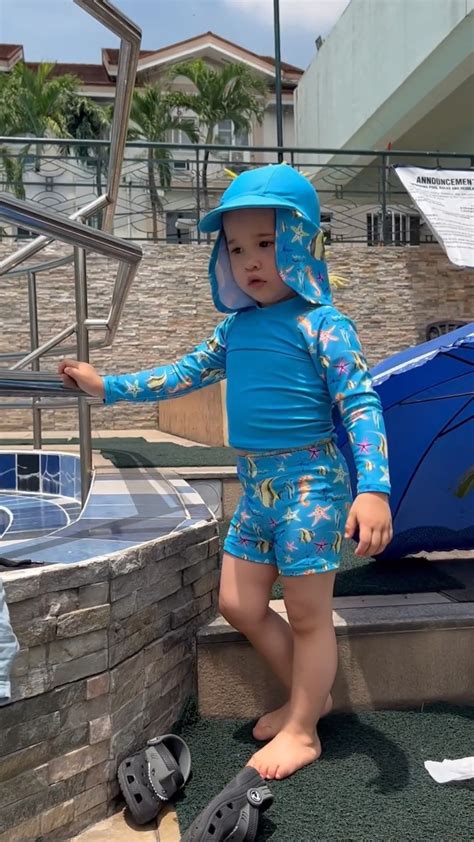
A quick photo of your stove before leaving for vacation could prevent potential disasters and alleviate anxiety, offering peace of mind during your time off. The simple act of documenting that the stove is off has become a popular pre-vacation ritual for many, providing a visual confirmation to combat the nagging worry of having left an appliance on.
The ubiquitous pre-vacation checklist now often includes an unusual item: snapping a picture of the stove, oven, or other potentially hazardous appliances before locking the door. This trend, highlighted in a recent Yahoo! Lifestyle article, addresses a common source of vacation anxiety – the persistent fear of having left something on that could lead to a fire or other household disaster.
The practice is rooted in the psychology of memory and the fallibility of human recollection, according to experts cited in the Yahoo! article. “We know that prospective memory, which is remembering to do something in the future, is incredibly error-prone,” says Dr. Cindy Lustig, a psychology professor at the University of Michigan. The visual confirmation provided by the photograph acts as an external memory aid, reducing reliance on potentially unreliable cognitive processes.
For many, the photo serves as a tangible reassurance that can be accessed remotely via smartphone, offering immediate relief from worry. Instead of spending vacation time fretting about potential home hazards, individuals can quickly check their photo and confirm the appliance was indeed turned off. The trend is gaining traction across social media platforms, where users share their pre-vacation stove photos and discuss the psychological benefits of the practice.
“It’s a small thing that gives me so much peace of mind,” one user commented on a social media thread discussing pre-vacation rituals. The sentiment is echoed by many others who have adopted the practice, highlighting the emotional value of the seemingly simple act. The photo serves as a visual insurance policy against the “did I or didn’t I?” dilemma that can plague vacationers.
The article further delves into the underlying reasons for this pervasive anxiety, suggesting that it stems from a combination of factors including the desire for control, the fear of loss, and the potential consequences of negligence. Fires caused by unattended cooking appliances are a significant concern, and the awareness of this risk likely contributes to the heightened anxiety experienced by many vacationers.
By taking a photo, individuals are taking proactive steps to mitigate this risk and regain a sense of control over their environment, even when they are miles away. The act of photographing the stove is not just about verifying its status; it’s also about alleviating anxiety and fostering a sense of security, allowing for a more relaxed and enjoyable vacation experience. The simplicity and accessibility of the solution further contribute to its appeal, making it a readily available tool for managing pre-vacation stress.
The trend also reflects a broader cultural shift towards using technology to manage everyday anxieties. From security cameras to smart home devices, individuals are increasingly relying on technological solutions to monitor and control their homes remotely. The pre-vacation stove photo is simply another manifestation of this trend, demonstrating the power of technology to provide reassurance and peace of mind in an increasingly complex world.
The Yahoo! Lifestyle article underscores the importance of addressing these anxieties and finding effective coping mechanisms. While a stove photo may seem like a trivial act, it can have a significant impact on an individual’s overall well-being and their ability to fully enjoy their vacation. The article encourages readers to consider adopting the practice as a simple yet effective strategy for managing pre-vacation stress and promoting a more relaxed and enjoyable travel experience.
The widespread adoption of this practice highlights the universality of pre-vacation anxiety and the ingenuity of individuals in finding creative solutions to manage it. The pre-vacation stove photo is a testament to the power of simple interventions to alleviate stress and promote well-being, underscoring the importance of addressing everyday anxieties and finding practical strategies for coping with them.
The trend extends beyond stoves and ovens, encompassing other appliances such as coffee makers, hair straighteners, and even lights. The underlying principle remains the same: providing visual confirmation that the appliance is off or in a safe state before leaving for an extended period. This comprehensive approach to pre-vacation safety reflects a growing awareness of potential hazards and a proactive desire to mitigate risks.
Moreover, the practice fosters a sense of responsibility and accountability. By taking the photo, individuals are consciously acknowledging the potential risks and taking steps to prevent them. This sense of proactive engagement can further reduce anxiety and promote a greater sense of control over the situation. The photo serves as a reminder of the individual’s commitment to safety and their dedication to protecting their home and belongings.
The psychological benefits of the pre-vacation stove photo are further amplified by the sense of community and shared experience that has emerged around the practice. Social media platforms have become hubs for individuals to share their photos, discuss their anxieties, and offer support and encouragement to one another. This sense of collective engagement can be particularly helpful for those who struggle with anxiety, providing a sense of validation and reducing feelings of isolation.
The article also emphasizes the importance of tailoring pre-vacation rituals to individual needs and preferences. While a stove photo may be effective for some, others may find that a more comprehensive checklist or a thorough walk-through of the house provides greater reassurance. The key is to identify the specific sources of anxiety and develop strategies that effectively address them. There is no one-size-fits-all solution, and individuals should feel empowered to create their own personalized pre-vacation routines.
In conclusion, the pre-vacation stove photo is more than just a quirky habit; it is a powerful tool for managing anxiety, promoting peace of mind, and enhancing the overall vacation experience. By providing visual confirmation and fostering a sense of control, the practice empowers individuals to relax and enjoy their time off without the nagging worry of potential home hazards. The trend reflects a broader cultural shift towards using technology to manage everyday anxieties and underscores the importance of addressing these anxieties and finding effective coping mechanisms.
The practice also serves as a reminder to be mindful and present in the moment, both before leaving for vacation and during the vacation itself. By taking the time to consciously check appliances and document their status, individuals are reinforcing their awareness of potential hazards and promoting a more responsible approach to home safety. This mindfulness can extend beyond pre-vacation rituals and permeate other aspects of daily life, fostering a greater sense of awareness and responsibility.
The long-term benefits of adopting this practice extend beyond immediate anxiety relief. By consistently engaging in pre-vacation safety checks, individuals are developing habits that can prevent potential disasters and protect their homes and belongings. These habits can also serve as a positive example for others, encouraging friends and family members to adopt similar practices and promote a culture of safety within their communities.
Furthermore, the pre-vacation stove photo can serve as a valuable record in the event of an incident. While the primary purpose is to prevent disasters, the photo can also provide evidence that reasonable precautions were taken, which can be helpful in insurance claims or other legal matters. The photo serves as a documented record of the state of the appliance at the time of departure, providing valuable context in the event of an unforeseen event.
The article also touches upon the potential downsides of relying too heavily on technology for anxiety management. While the pre-vacation stove photo can be a helpful tool, it is important to avoid becoming overly dependent on it. Excessive reliance on technology can lead to increased anxiety if the technology fails or becomes unavailable. It is important to maintain a balanced approach and to develop other coping mechanisms that do not rely solely on technology.
The article underscores the importance of addressing the underlying causes of anxiety, rather than simply treating the symptoms. While the pre-vacation stove photo can provide temporary relief, it is not a substitute for addressing the root causes of anxiety, such as fear of loss, lack of control, or past traumatic experiences. Individuals who experience persistent anxiety should seek professional help to address these underlying issues and develop long-term coping strategies.
The pre-vacation stove photo trend is a microcosm of a larger cultural phenomenon: the increasing awareness of mental health and the growing willingness to seek help and support. The practice reflects a shift towards prioritizing well-being and recognizing the importance of addressing everyday anxieties. This shift is evident in the increasing popularity of mindfulness practices, stress-reduction techniques, and mental health resources.
The article also highlights the role of community in promoting mental health and well-being. The shared experiences and support found on social media platforms can be invaluable for individuals struggling with anxiety. The sense of connection and validation can reduce feelings of isolation and provide encouragement to seek help and develop coping strategies.
In addition to addressing individual anxieties, the pre-vacation stove photo trend also raises broader questions about societal responsibility for safety and well-being. The article implicitly suggests that manufacturers and policymakers should consider ways to make appliances safer and more user-friendly, reducing the likelihood of accidents and mitigating the anxieties associated with them.
The article also encourages readers to consider the environmental impact of their pre-vacation practices. While taking a photo of the stove may seem like a small act, it is important to be mindful of the broader environmental consequences of our actions. The article suggests considering alternative modes of transportation, reducing energy consumption, and minimizing waste during vacation travel.
The pre-vacation stove photo trend is a reminder that even small acts can have a significant impact on our well-being and the well-being of others. By consciously addressing our anxieties, promoting safety, and considering the environmental impact of our actions, we can create a more positive and sustainable world.
The Yahoo! Lifestyle article expertly captures the zeitgeist of modern anxieties and the creative solutions individuals devise to cope. The pre-vacation stove photo, seemingly trivial, represents a deeper human desire for control, security, and peace of mind in an increasingly uncertain world. It’s a simple act with profound psychological implications, a testament to the ingenuity and resilience of the human spirit. The spread of this practice also reflects the power of digital technology to amplify and share solutions, creating a sense of community around shared anxieties.
FAQ Section:
Q1: Why do people take pictures of their stoves before going on vacation?
A1: People take pictures of their stoves (and other appliances) before vacations primarily to alleviate anxiety related to the fear of having left an appliance on, which could potentially cause a fire or other damage. The photo serves as a visual confirmation that the appliance was turned off, providing peace of mind during their time away. As Dr. Cindy Lustig, a psychology professor at the University of Michigan, explains, it acts as an external memory aid, combating the fallibility of human memory regarding tasks performed before leaving.
Q2: Is this practice supported by any psychological evidence?
A2: Yes. The practice is supported by psychological principles related to memory and anxiety management. The act of taking a photo provides a tangible form of evidence that can be easily accessed and verified, reducing reliance on potentially unreliable recollections. It addresses “prospective memory,” which Dr. Lustig identifies as “incredibly error-prone.” Furthermore, it aligns with cognitive behavioral therapy (CBT) techniques, which often involve challenging anxious thoughts with evidence-based reassurances.
Q3: Does this only apply to stoves, or are people taking pictures of other appliances too?
A3: While the stove is the most commonly cited appliance, the practice extends to other potential fire hazards, including ovens, coffee makers, hair straighteners, and even lights. The underlying principle is the same: providing visual confirmation that the appliance is off or in a safe state before leaving for an extended period.
Q4: What are the potential downsides to relying on this practice?
A4: While generally beneficial, potential downsides include over-reliance on technology and the possibility of increased anxiety if the technology fails (e.g., phone battery dies, photo is lost). Additionally, it’s crucial to address the underlying causes of anxiety rather than solely relying on this practice as a quick fix. In some cases, obsessive or compulsive behaviors might necessitate professional mental health guidance.
Q5: Where did this trend originate, and how widespread is it?
A5: The exact origin is difficult to pinpoint, but the trend has gained significant traction across social media platforms, where users share their pre-vacation stove photos and discuss the psychological benefits. The Yahoo! Lifestyle article suggests that the widespread adoption of this practice highlights the universality of pre-vacation anxiety and the ingenuity of individuals in finding creative solutions to manage it. The fact that it’s featured in Yahoo! and widely discussed online indicates a substantial level of adoption.









